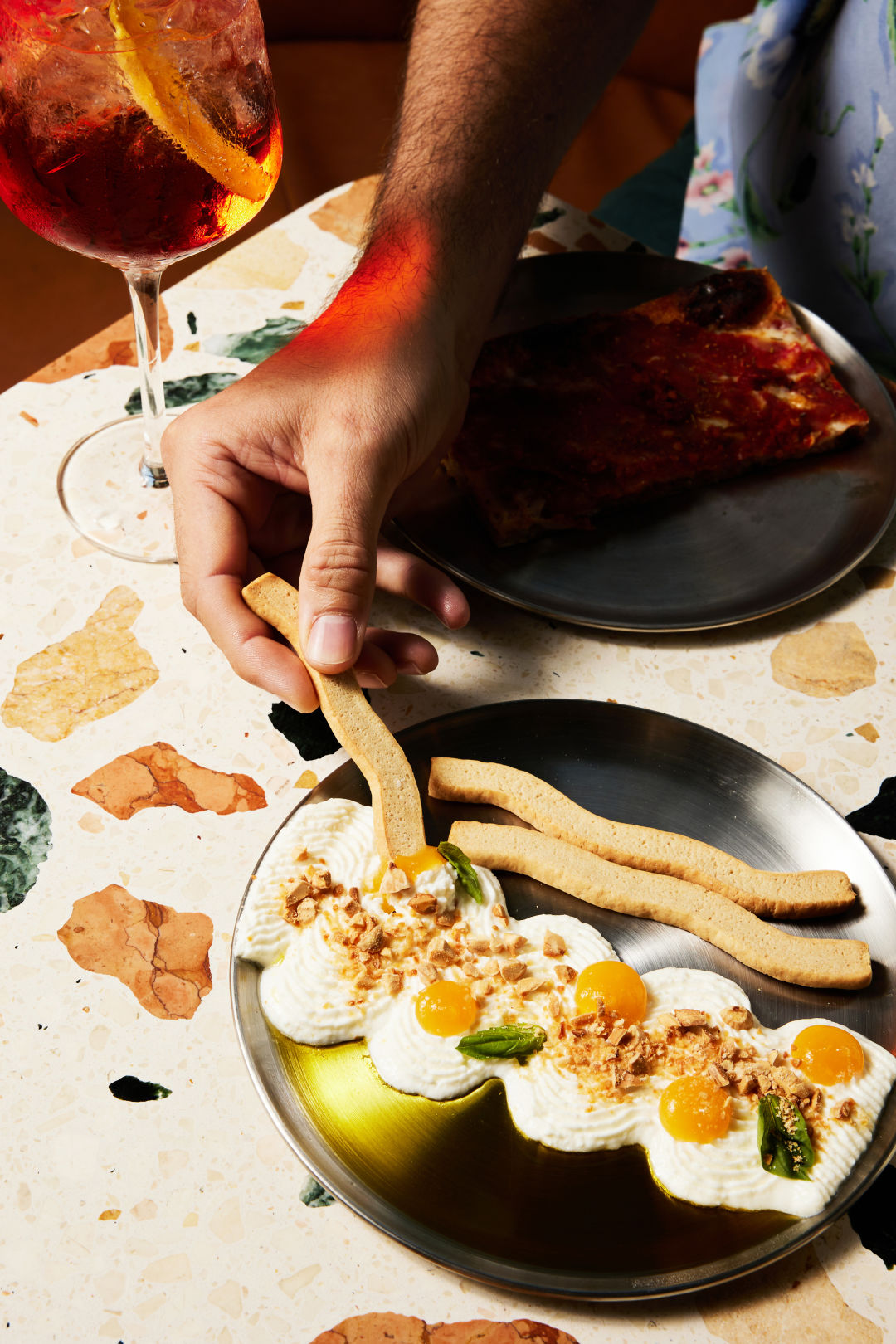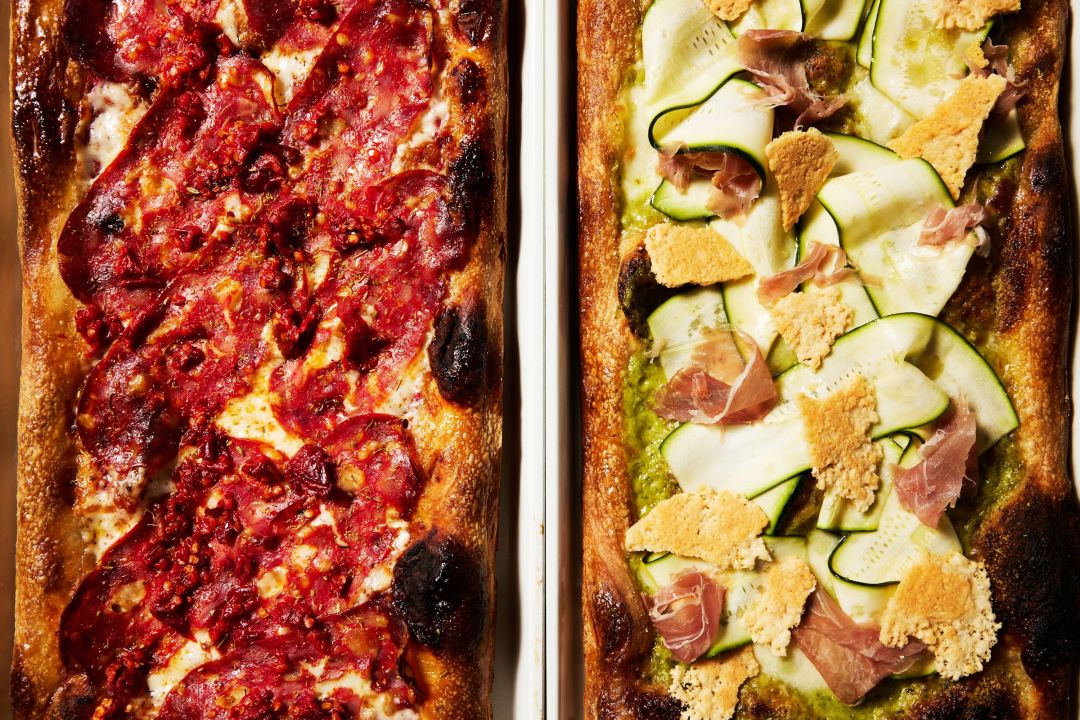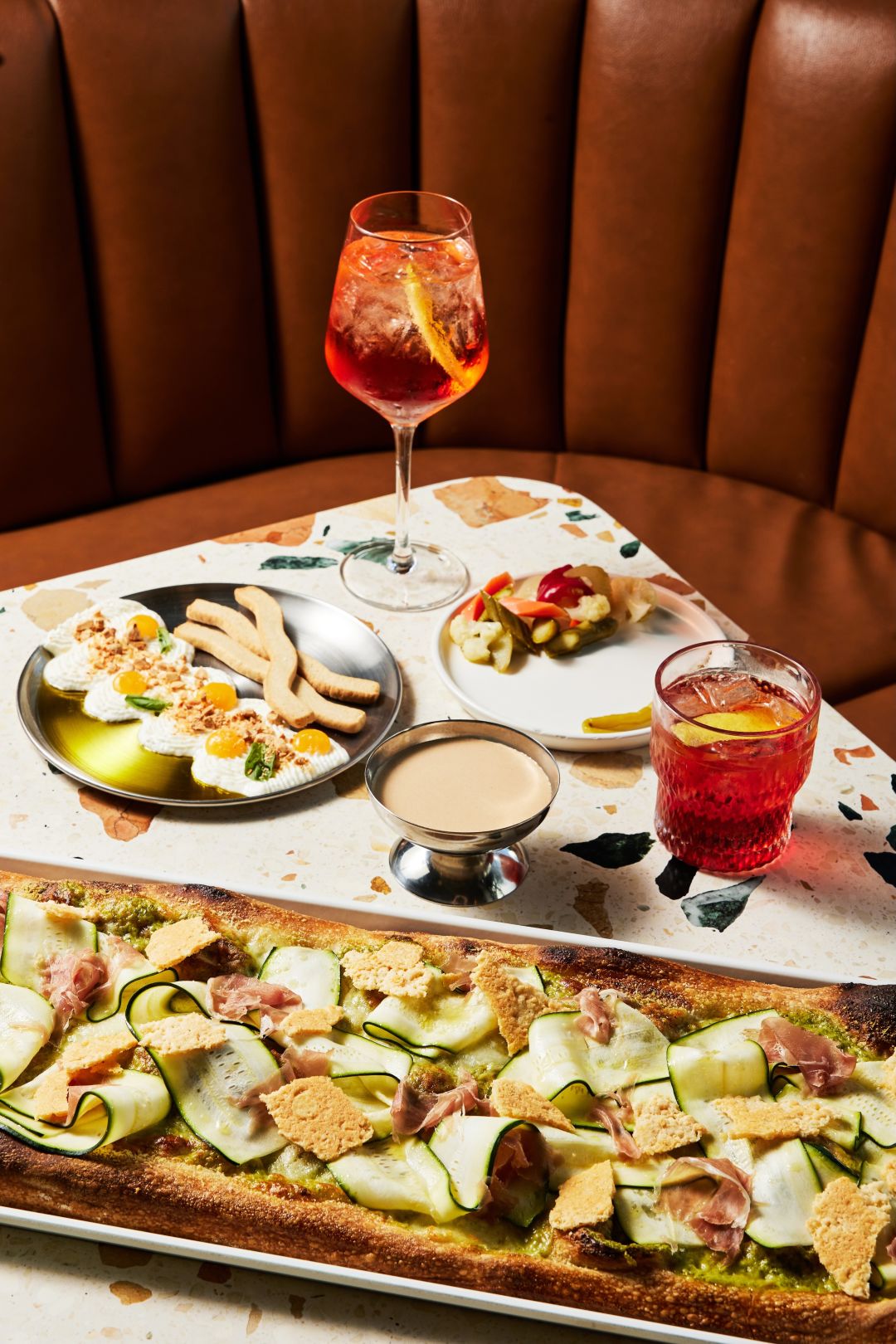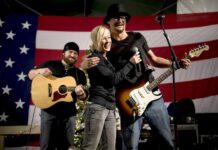This post was originally published on this site

Sacro Bosco puts out works of culinary art.
Sunlight streaming through the big windows lights my Aperol spritz afire, as if it—and I—were perched on the edge of a Positano hillside, basking in Mediterranean warmth. Set on the terrazzo table, accompanied by a plate of colorful pickled vegetables (free with the drink during happy hour), the cocktail is the second most beautiful part of my meal at Sacro Bosco, after the housemade ricotta appetizer.
Thick ribbons of soft, salty cheese squiggle down the plate, an impeccably raked zen garden of dairy penning in a lake of peppery green olive oil to one side; bordered by wavy crisps of grissini on the other. Grand baubles of apricot chamomile gelée, emerald leaves of basil, and confetti of crushed almonds transform the creamy canvas into a masterpiece dish, deserving of a spot in the Uffizi.
Christina Wood’s particular brand of edible perfectionism, on display daily at Temple Pastries, is equally evident in the culinary aesthetics of her latest venture, Sacro Bosco. The Roman-style pizzeria operates in the evenings, utilizing the same space as her renowned bakery (2524 S Jackson St), but with a completely separate crew and concept—an increasingly common solution to the ballooning costs of operating a restaurant.

The housemade ricotta tastes as good as it looks, which is stunning.
Two years ago, when Temple Pastries expanded its operations into the former Oaky’s Tex-Mex space next door to meet the huge demand for its rye croissants and sugared cruffins, Wood needed to find more revenue to cover the added cost. “How do we fit another restaurant into the nooks and crannies that are left behind from Temple’s operation?” she wondered. As a die-hard fan who could eat pizza every day of her life, Wood saw it as a logical next step for a bakery. “We’re already making doughs and stuff.”
Temple’s large menu took up most of the storage and fridge, so she had to keep the Sacro Bosco menu small, the concept simple, and adapt to the existing kitchen equipment. “Our oven is made for bread, and it doesn’t really get crazy hot,” she says, which necessitated a pan-style pie. She landed on something of a hybrid, using a Roman-style base with toppings inspired by the traditional flavors of Italian American cuisine.
“I loved the pizza in Rome, but it was not scratching that pizza itch I have as an American,” Wood says. She describes the salame piccante, with red sauce, spicy salame, Calabrian chile, and fennel pollen as her interpretation of the classic pepperoni pie, though it doesn’t necessarily scratch that itch, either—in the same way a prosciutto and brie baguette wouldn’t do so for a grilled cheese with ham. Sacro Bosco is an excellent restaurant. But it’s not one that squares with any of the multitude of interpretations of a pizza place.

The rotating seasonal pizza menu includes the salame piccante (left) and summer squash pie.
Crisp-edged, long, and rectangular, Sacro Bosco’s crust resembles a thin focaccia, turning the pie into something of an open-faced sandwich. Thus, Sacro Bosco’s best pizzas come out sounding like the love child of a pizzeria and a deli: folded slices of pink mortadella, each dabbed with a bright pistachio pesto and generous dollops of stracciatella. The heirloom tomato pie works a similar magic with fermented tomato sauce, beefy slices of the star, plenty of garlic, and a lemony oil. They share the elements of a sandwich, where, ideally, the sauce just barely softens the top of the bread, while enhancing or highlighting the focal ingredient.
The $32–38 price per pie is quite reasonable for the amount of food—easily enough for four people with an appetizer or two. But this type of ingredient-driven fancy pizza calls out for a sampling of the enticing options. Though the rectangular pies famously come by the slice in Italy, here they come only whole. Ordering multiple pies without more people sends the cost skyrocketing.
Through its first few months, Sacro Bosco smoothed out many of the logistical challenges presented by squeezing a second business into the shell of an established spot. The hybrid counter service smoothly transitioned into table service, much more fitting of the high-quality ingredients and excellent selection of natural wine. They found custom boxes to contain the two-foot pies, opening the option for takeout. However, Wood has bad news about the biggest issue with the style.

The casual elegance of Italy shows up on the plate at Sacro Bosco.
The dough is sauced prior to par-baking, then topped and finished to order by the pan. Thus, there is not, nor will there likely ever be, says Wood, an option for anything smaller than the full rectangle, eight large slices of a single flavor. Unless you come with a large group, you’ll want to agree on a single pie. Woe be to the lone vegetarian friend. Wood suggests taking leftovers, but the airy crusts reheat poorly and toppings like the prosciutto and zucchini ribbons on the summer squash pie do even worse.
That makes it difficult to think of Sacro Bosco as a great pizza spot—the kind of place where shared pizzas in everyone’s favorite flavors serve as the centerpiece of the meal. Even other pan styles, such as Detroit—hit a specific nostalgic note. Sacro Bosco does no such thing.
Which should not, for a moment, stop anyone from going there. Sacro Bosco may not be a great pizza spot, but it is a great restaurant. It feels casual but looks elegant, with the easygoing sophistication for which Americans envy Italy. Though the menu is small, it is colorful and fun; the highlights are the mesmerizing ricotta and a wonderfully simple dessert of butterscotch budino with crunchy hazelnuts on top. The lowlight is simply being unable to engage in the all-American activity of ordering exactly and everything one’s heart desires—an admittedly fair trade for an evening painted with the deep purple of a sparkling lambrusco, vivid red of pickled peppers, and layered intrigue of tiramisu.

















